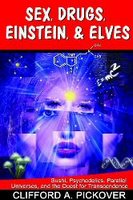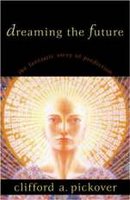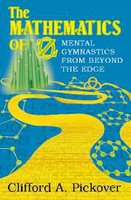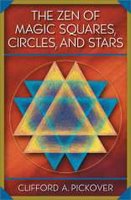Saturday, July 07, 2007
Biblical Truth
Penn and Teller discuss Biblical truth, as they see it.
Comments:
<< Home
In I Kings 7:23, God creates a circular tank, with a diameter of ten cubits and a circumference of thirty cubits, making the value of pi three.
Oh dear. Well, here we go again.
First of all, regarding Alex’ comment about Pi = 3 instead of 3.14159…. No matter what number the Bible were to record for Pi, it could be assailed. I have a book that lists Pi to one million digits. It is also wrong. Pi is transcendental and irrational; it has no finite numeric expression. Pi is about 3. A one percent error is tolerable for a hand made 15 foot tank crafted in antiquity. If you want a more exact approximation, use 3.1 or whatever floats your boat.
Regarding Penn and Teller’s numerous unsupported allegations, let me just itemize and refute them all as briefly as I can.
1. Claim: Archaeology refutes the Bible. Facts: The claim is a fallacious argument from silence. Archaeology has verified much of the Bible, but certainly not all. As a young science (~125 years old) there is still much to discover. The absence of evidence is not a refutation. The discovery of contradictory evidence is what counts, yet time has only strengthened the case for the historical accuracy of the Biblical narratives. In the last twenty years, many such arguments from silence have evaporated. Place names, geographical references, personages, etc., which were once thought to be inaccurate have now been verified. The evidence for the Biblical accuracy is being strengthened with each new turn of the archaeologist’s spade, not weakened.
2. Claim: Genesis 1 contradicts the creation account of Chapter 2. Fact: Chapter 1 provides the overview. Chapter 2 provides some specific details. There is no contradiction. Read it for goodness sake.
3. Claim: Moses did not part the Red Sea. It was really a hot wind blowing across the Sea of Reeds. Fact: The Sea of Reeds (or Reed Sea) contained, not surprisingly, reeds. Therefore, and as is known, it is a shallow body of water capable of being waded across without any need for a miracle. No Biblical writer attempting to influence belief in a miracle-working God would record the event with any hope of persuasion. Such a seminal historical fact witnessed by thousands could not have been easily falsified. More logically, it would have been omitted. Moreover, what would have been the revisionists motive? If the writer did not believe in a miracle working God who punishes evil,he would have said so; and if he did, he would not have lied.
4. Claim: Christians are “rabid and uneducated” and being smart, they are good at rationalizing their faith. Fact: I’m not making this claim up; watch the video again. Instead of regarding Christians as ignoramuses, perhaps atheists should rethink a worldview that requires everyone to be an idiot excepting themselves.
5. Claim: Believers practice Christianity a la carte: picking and choosing what they want to believe. Facts: Christians hold the Word of God to be inerrant. This should not be very hard to refute if false. We accept the Bible in its entirety. However, in addition to literal accounts, also present are progressive revelation, figures of speech, and parabolic and hyperbolic language. Passages should be taken in the sense the author intended. For the overwhelming corpus of Scripture, this is not difficult to discern. Regarding progressive revelation: if I give my child a spoon when young and a fork when older, that does not mean I have contradicted myself. Likewise, the Bible is very clear about the purpose of the ceremonial law in preparing the language, custom, and culture necessary to allow the First Advent to be understandable. Christ was the final atonement, the kinsman redeemer, the sacrificial lamb, the promised Messiah, etc. None of that would have made any sense without those concepts having been prepared and developed over millennia. Nor did it make any sense to retain the ceremonial law after it had accomplished its mission, its objective being fulfilled in Christ – the most pre-announced figure in history.
6. Claim: Noah’s ark borrows from other flood accounts, has no scientific support, and is untenable. Facts: Noah’s ark predates other flood accounts; any “borrowing” is in the opposite direction. If the story of a worldwide flood were true, we would expect to find marine fossils everywhere including desserts and mountaintops, and this is what we find. Noah was not an antediluvian Santa Claus, distributing animals like Christmas presents across the globe, nor did the ark carry every species extant today. These are straw-man arguments. Christians holding to a literal Genesis account believe that man and prototypical animals were reintroduced to the globe from a Mesopotamian landing of the ark in accordance with the Biblical narrative and linguistic and archaeological evidence. From there, micro-evolutionary forces (selective breeding pressures, migration, etc.) resulted in the differentiation and distribution we see today. (Yes, Christians believe in micro-evolution – it is a scientifically demonstrable fact. That is not to say we blindly accept goo-to-you macro-evolution. My opinion is that such is an unwarranted and unsupported extrapolation of micro-evolution, though other Christians accept evolution in its totality.)
7. Claim: No archaeological evidence exists for Moses or the enslavement of the Jews by Egyptians. Facts: Even if this were true this would not disprove the Biblical narrative (see 1, argument from silence). However, it is not surprising that a relatively insignificant (at the time) Jewish presence in Egypt would not have been widely chronicled. Even if the account were reduced somewhere in ancient writing, archaeology is a maturing science – there is more yet to discover.
Additionally, evidence does exist. For example, the price for selling Joseph into slavery (recorded as 20 shekels of silver in Genesis) matches the going rate for slaves during the 18th to 19th century to which the account is dated. Thereafter, the price steadily rose; the narrative could not have been fabricated in the 6th century B.C. as some claim since the rate had already risen to 120 shekels by then and would have been recorded as such. Moreover, the Decalogue and the Sinai Covenants given by Moses match the general seven-fold legal construction of recently discovered Hittite covenants of the period. Additionally, the evolution of inheritance laws in the region also matches that of the Biblical narratives. In patriarchal times the Bible records equally apportioned inheritance. By the time of the Exodus, the Bible records a double portion for the first-born, in accordance with historical documentation from these two periods.
8. Claim: Messiahs were everywhere in Jesus day. Apollonius of Tyanna also claimed to be the Messiah, to have risen from the dead, and to have performed miracles. The Jesus account is no more reliable. Facts: Saying something over and over does not make it true. Apollonius post-dates Christ. The fact that he borrowed from the resurrection narrative proves that Christ existed, that the Biblical narrative was already in place by the late first century A.D., and that it was believed and influential. The fact that few today recognize the name Apollonius is good evidence that he was not regarded as a credible Messianic candidate.
On the other hand, the resurrection is amply attested, even by hostile witnesses. For example, the Jews insisted that Christ’s body was stolen by night. This is hostile testimony that the tomb was empty despite being sealed and guarded by a company of Roman soldiers laboring under the penalty of death should they breech their trust.
We also have the transformed lives of the Apostles: the New Testament records that before the resurrection, Peter fearfully denied his own Master three times; and immediately after the crucifixion, the Apostles were in hiding behind closed doors. Yet after the resurrection these same persons preached boldly at the cost of their lives and converted the known world. Remarkably, the Apostle Paul who once persecuted the church became its strongest champion after a resurrection appearance of Christ.
Moreover, roughly 500 persons then living were eyewitnesses to Christ’s resurrection. Such persons were capable of being cross examined by a hostile Roman nation (many were, and many were put to death for failing to recant what they would have known to be a lie). Penn and Teller apparently want us to believe that hundreds of persons died for what they knew to be a sham, that they willingly lost their lives in painful executions, and that they did so with the utter certainty of entering eternal hellfire for knowingly bearing false witness about God’s own Son.
The world clock has been reset. We now divide history into time before and after Christ’s birth. We name our dogs Nero and Caesar and our children Peter and Paul. We call ourselves Christians, not Apollonians. The choice between Christ and What’s-his-face doesn’t seem like a close call to me and I am sad at my own lack of understanding before my conversion.
9. Claim: The gospels are unreliable, pick any of them. Fact: Luke and Acts (also written by Luke, to pick one gospel writer) are filled with place names, geographical features, and many historical facts that are fully capable of being checked. The result: they are confirmed in every instance to which the ample evidence attests. The gospels and New Testament generally comprise the most reliable ancient manuscripts known, attested with thousands of copies and fragments distributed over thousands of kilometers and more than a thousand years of history. No ancient manuscript even comes close, most only having one or at most a few surviving copies. It is no exaggeration to say that we know the words of the original gospels with greater certainty that the words of Shakespeare’s original plays, despite the latter being located more than a millennium in time closer to our own.
10. Claim: You should read the Bible. Fact: I agree. Start with the “inaccurate” gospel of Luke. Then read Acts by the same author. Then read Romans by the Apostle Paul. In these three books, you’ll have the condensed themes of the entire twenty-two books of the New Testament. Then you can begin to make up your own mind.
Post a Comment
First of all, regarding Alex’ comment about Pi = 3 instead of 3.14159…. No matter what number the Bible were to record for Pi, it could be assailed. I have a book that lists Pi to one million digits. It is also wrong. Pi is transcendental and irrational; it has no finite numeric expression. Pi is about 3. A one percent error is tolerable for a hand made 15 foot tank crafted in antiquity. If you want a more exact approximation, use 3.1 or whatever floats your boat.
Regarding Penn and Teller’s numerous unsupported allegations, let me just itemize and refute them all as briefly as I can.
1. Claim: Archaeology refutes the Bible. Facts: The claim is a fallacious argument from silence. Archaeology has verified much of the Bible, but certainly not all. As a young science (~125 years old) there is still much to discover. The absence of evidence is not a refutation. The discovery of contradictory evidence is what counts, yet time has only strengthened the case for the historical accuracy of the Biblical narratives. In the last twenty years, many such arguments from silence have evaporated. Place names, geographical references, personages, etc., which were once thought to be inaccurate have now been verified. The evidence for the Biblical accuracy is being strengthened with each new turn of the archaeologist’s spade, not weakened.
2. Claim: Genesis 1 contradicts the creation account of Chapter 2. Fact: Chapter 1 provides the overview. Chapter 2 provides some specific details. There is no contradiction. Read it for goodness sake.
3. Claim: Moses did not part the Red Sea. It was really a hot wind blowing across the Sea of Reeds. Fact: The Sea of Reeds (or Reed Sea) contained, not surprisingly, reeds. Therefore, and as is known, it is a shallow body of water capable of being waded across without any need for a miracle. No Biblical writer attempting to influence belief in a miracle-working God would record the event with any hope of persuasion. Such a seminal historical fact witnessed by thousands could not have been easily falsified. More logically, it would have been omitted. Moreover, what would have been the revisionists motive? If the writer did not believe in a miracle working God who punishes evil,he would have said so; and if he did, he would not have lied.
4. Claim: Christians are “rabid and uneducated” and being smart, they are good at rationalizing their faith. Fact: I’m not making this claim up; watch the video again. Instead of regarding Christians as ignoramuses, perhaps atheists should rethink a worldview that requires everyone to be an idiot excepting themselves.
5. Claim: Believers practice Christianity a la carte: picking and choosing what they want to believe. Facts: Christians hold the Word of God to be inerrant. This should not be very hard to refute if false. We accept the Bible in its entirety. However, in addition to literal accounts, also present are progressive revelation, figures of speech, and parabolic and hyperbolic language. Passages should be taken in the sense the author intended. For the overwhelming corpus of Scripture, this is not difficult to discern. Regarding progressive revelation: if I give my child a spoon when young and a fork when older, that does not mean I have contradicted myself. Likewise, the Bible is very clear about the purpose of the ceremonial law in preparing the language, custom, and culture necessary to allow the First Advent to be understandable. Christ was the final atonement, the kinsman redeemer, the sacrificial lamb, the promised Messiah, etc. None of that would have made any sense without those concepts having been prepared and developed over millennia. Nor did it make any sense to retain the ceremonial law after it had accomplished its mission, its objective being fulfilled in Christ – the most pre-announced figure in history.
6. Claim: Noah’s ark borrows from other flood accounts, has no scientific support, and is untenable. Facts: Noah’s ark predates other flood accounts; any “borrowing” is in the opposite direction. If the story of a worldwide flood were true, we would expect to find marine fossils everywhere including desserts and mountaintops, and this is what we find. Noah was not an antediluvian Santa Claus, distributing animals like Christmas presents across the globe, nor did the ark carry every species extant today. These are straw-man arguments. Christians holding to a literal Genesis account believe that man and prototypical animals were reintroduced to the globe from a Mesopotamian landing of the ark in accordance with the Biblical narrative and linguistic and archaeological evidence. From there, micro-evolutionary forces (selective breeding pressures, migration, etc.) resulted in the differentiation and distribution we see today. (Yes, Christians believe in micro-evolution – it is a scientifically demonstrable fact. That is not to say we blindly accept goo-to-you macro-evolution. My opinion is that such is an unwarranted and unsupported extrapolation of micro-evolution, though other Christians accept evolution in its totality.)
7. Claim: No archaeological evidence exists for Moses or the enslavement of the Jews by Egyptians. Facts: Even if this were true this would not disprove the Biblical narrative (see 1, argument from silence). However, it is not surprising that a relatively insignificant (at the time) Jewish presence in Egypt would not have been widely chronicled. Even if the account were reduced somewhere in ancient writing, archaeology is a maturing science – there is more yet to discover.
Additionally, evidence does exist. For example, the price for selling Joseph into slavery (recorded as 20 shekels of silver in Genesis) matches the going rate for slaves during the 18th to 19th century to which the account is dated. Thereafter, the price steadily rose; the narrative could not have been fabricated in the 6th century B.C. as some claim since the rate had already risen to 120 shekels by then and would have been recorded as such. Moreover, the Decalogue and the Sinai Covenants given by Moses match the general seven-fold legal construction of recently discovered Hittite covenants of the period. Additionally, the evolution of inheritance laws in the region also matches that of the Biblical narratives. In patriarchal times the Bible records equally apportioned inheritance. By the time of the Exodus, the Bible records a double portion for the first-born, in accordance with historical documentation from these two periods.
8. Claim: Messiahs were everywhere in Jesus day. Apollonius of Tyanna also claimed to be the Messiah, to have risen from the dead, and to have performed miracles. The Jesus account is no more reliable. Facts: Saying something over and over does not make it true. Apollonius post-dates Christ. The fact that he borrowed from the resurrection narrative proves that Christ existed, that the Biblical narrative was already in place by the late first century A.D., and that it was believed and influential. The fact that few today recognize the name Apollonius is good evidence that he was not regarded as a credible Messianic candidate.
On the other hand, the resurrection is amply attested, even by hostile witnesses. For example, the Jews insisted that Christ’s body was stolen by night. This is hostile testimony that the tomb was empty despite being sealed and guarded by a company of Roman soldiers laboring under the penalty of death should they breech their trust.
We also have the transformed lives of the Apostles: the New Testament records that before the resurrection, Peter fearfully denied his own Master three times; and immediately after the crucifixion, the Apostles were in hiding behind closed doors. Yet after the resurrection these same persons preached boldly at the cost of their lives and converted the known world. Remarkably, the Apostle Paul who once persecuted the church became its strongest champion after a resurrection appearance of Christ.
Moreover, roughly 500 persons then living were eyewitnesses to Christ’s resurrection. Such persons were capable of being cross examined by a hostile Roman nation (many were, and many were put to death for failing to recant what they would have known to be a lie). Penn and Teller apparently want us to believe that hundreds of persons died for what they knew to be a sham, that they willingly lost their lives in painful executions, and that they did so with the utter certainty of entering eternal hellfire for knowingly bearing false witness about God’s own Son.
The world clock has been reset. We now divide history into time before and after Christ’s birth. We name our dogs Nero and Caesar and our children Peter and Paul. We call ourselves Christians, not Apollonians. The choice between Christ and What’s-his-face doesn’t seem like a close call to me and I am sad at my own lack of understanding before my conversion.
9. Claim: The gospels are unreliable, pick any of them. Fact: Luke and Acts (also written by Luke, to pick one gospel writer) are filled with place names, geographical features, and many historical facts that are fully capable of being checked. The result: they are confirmed in every instance to which the ample evidence attests. The gospels and New Testament generally comprise the most reliable ancient manuscripts known, attested with thousands of copies and fragments distributed over thousands of kilometers and more than a thousand years of history. No ancient manuscript even comes close, most only having one or at most a few surviving copies. It is no exaggeration to say that we know the words of the original gospels with greater certainty that the words of Shakespeare’s original plays, despite the latter being located more than a millennium in time closer to our own.
10. Claim: You should read the Bible. Fact: I agree. Start with the “inaccurate” gospel of Luke. Then read Acts by the same author. Then read Romans by the Apostle Paul. In these three books, you’ll have the condensed themes of the entire twenty-two books of the New Testament. Then you can begin to make up your own mind.
<< Home
 Godlorica
Godlorica



























